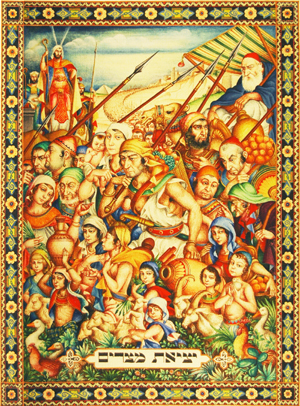
We are pleased to announce the opening of the fourth class of the three-year program in
Jungian Psychotherapy
Bar Ilan University, Continuing Education, Weisfeld School of Social Work
Dr. Erel Shalit, Academic Director
For further details, please click here
Studies are conducted in Hebrew, please see below
תוכנית תלת-שנתית לפסיכותרפיה בגישה האנליטית של יונג
מרכז אקדמי: ד"ר אראל שליט
תאריך פתיחה: אוקטובר 2013
מטרות התכנית
התכנית מיועדת להכשיר אנשי מקצוע למטפלים בפסיכותרפיה עפ"י הגישה האנליטית של יונג. התכנית תקנה היכרות מעמיקה עם תורתו של יונג ודרך יישומה: כולל הבנת נפש האדם המתפתחת בתהליך האינדיבידואציה שלו ובתוך סביבתו ושורשיו התרבותיים, החל מהילדות המוקדמת, הבגרות, אמצע החיים והזקנה. תלמד גם הגישה הסימבולית והטיפולית של הפסיכולוגיה היונגיאנית ואופן העבודה עם תכני הלא-מודע. ההוראה וההדרכה ינתנו ע"י מיטב האנליטיקאים היונגיאניים בארץ.
אוכלוסיית היעד
עובדים סוציאליים בעלי תואר שני לפחות; פסיכולוגים; פסיכיאטרים.
מספר מקומות ישמרו למועמדים בעלי תואר שני בתחומי הטיפול כגון, טיפול ביצירה ובהבעה וקרימינולוגיה קלינית.
מבנה התכנית
הלימודים יתקיימו במשך שלוש שנים במתכונת משולבת של קורסים תיאורטיים, סדנאות חווייתיות, סמינר קליני והדרכה קבוצתית; בימי שני בשעות 15:00-20:30 בשנה הראשונה ובשעות 13:00-20:30 בשנים השניה והשלישית. סה"כ 572 שעות.
סגל ההוראה
לעיון ברשימה המעודכנת של חברי סגל התכנית:
רשימת חברי הסגל מתעדכנת מעת לעת.
ועדת הוראה והיגוי
ד"ר יהודה אברמוביץ, ד"ר אבי באומן, גב' רינה פורת, ד"ר אראל שליט.
מרכז הדרכה: מר נתנאל פרי
מרכזת עבודות גמר: גב' תמר לנגבהיים
מטלות
קריאה רצופה של חומר מקצועי בעברית ובאנגלית.
הגשת עבודה בהיקף של 5-7 עמודים בסיום השנה הראשונה והשניה אשר תשקף את הבנת הרוח היונגיאנית.
בסיום השנה השלישית תוגש עבודה אשר בה יידרש שילוב של הבנת התיאוריה והגישה הטיפולית.
על הסטודנט להתחיל הדרכה פרטנית בשנה הראשונה ולהמשיכה עד לסיום התכנית. ההדרכה תינתן ע"י מדריכי התכנית בעלות של 250 ש"ח לשעת הדרכה. נדרשות 90 שעות הדרכה, אשר מתחלקות בין שני מדריכים, לפחות 30 שעות אצל כל מדריך.
לסטודנטים בתכנית מומלץ לעבור טיפול באורינטציה יונגיאנית.
תעודה
לעומדים בהצלחה בדרישות התכנית, תוענק תעודה המאשרת סיום לימודי פסיכותרפיה בגישה האנליטית של יונג מטעם היחידה ללימודי המשך של ביה"ס לעבודה סוציאלית ע"ש לואיס וגבי וייספלד, אוניברסיטת בר-אילן.
התכנית מוכרת ע"י האגודה הישראלית לפסיכותרפיה פסיכואנליטית.
התכנית אינה מוכרת לגמול השתלמות.
הרשמה
על הנרשמים לצרף:- טופס הרשמה
- דמי הרשמה - המחאה בסך 250 ש"ח לפקודת אוניברסיטת בר-אילן
- קורות חיים אישיים ומקצועיים (לימודים אקדמיים ולא אקדמיים, התנסות מקצועית ופרסומים)
- תמונת פספורט
- צילומי תעודות של התואר הראשון/השני
- אישורים על ניסיון קליני של שלוש שנים
המתקבלים לתכנית מחויבים לתכנית המלאה.
שכר הלימוד
שנה א' – 8,600 ₪ + 250 ₪ דמי הרשמה.ניתן לשלם בשמונה תשלומים הצמודים למדד יוקר המחיה יולי 2013.
שנה ב' – 8,600 ₪
ניתן לשלם בשמונה תשלומים הצמודים למדד יוקר המחיה יולי 2014.
שנה ג' – 8,600 ₪
ניתן לשלם בשמונה תשלומים הצמודים למדד יוקר המחיה יולי 2015
להורדת טופס הרשמה לקורס נא לחץ/י כאן
:פרטים נוספים
לימודי המשך ביה"ס לעבודה סוציאלית ע"ש לואיס וגבי וייספלד אוניברסיטת בר- אילן
טלפונים: 5317265 - 03, 5318211 - 03
פקס: 7384043 - 03











